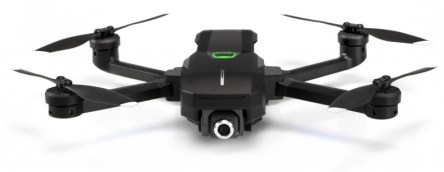Commercial property photos are notoriously unimaginative. Prospects have grown accustomed to mundane shots of empty spaces. But what if you offered something more interesting? Your property will gain the competitive advantage. Below are five tips for better commercial property photography that will help you stand apart from the crowd. Show Interactions, Not Spaces All commercial spaces have a ceiling, walls, and a floor. Skip the boring space photos. Instead, showcase interactions and operations within the space. Here are a few examples: Accentuate the room’s natural light by depicting an employee as she waters thriving, indoor plants near large windows Capture a team effortlessly unloading packages on the spacious and updated loading dock Emphasize your rapid WiFi availability with teams working simultaneously on their laptops and mobile devices Highlight your services by showing a vendor removing a recycling bin from the site Stage Like Sales Depend on It! As you’ve gathered by now, staging a commercial space may require models and supplies. It could be worthwhile to invest in office furniture so that you can stage spaces now and in the future. Otherwise, you can find models, photographers, and props on sites like MuseCube, Model Mayhem, and OneSource Talent. Commercial tenants want to see the potential of the space that you offer. If live staging is cost prohibitive, consider virtual staging. Virtual “renovations” are a great way to show potential uses for the space. Showcase Versatility Think beyond expected uses of the unit. Consider creative approaches for the space, such as coworking and CrossFit. By thinking outside of the box, you may attract a prospect that had not previously considered your site. Location, Location, Location Your property’s neighborhood may be a noteworthy part of your marketing efforts. Are there restaurants nearby that tenants may enjoy...
Mantis Q
Drone for the Masses?
Drones have been increasingly popular in recent years, disrupting various industries with their aerial perspective. Until recently, the more professional models were prohibitively expensive, unless being purchased for a specific business venture. This summer saw the launch of a new drone that’s designed for the masses—Yuneec’s Mantis Q, a small, relatively powerful drone with a semi-reasonable price tag (about $500). Weighting a little over one pound, its in the sweet spot between budget drones like DJI’s Spark, and higher-end models like DJI’s Mavic Air. It holds in its 9 x 7 x 2 inch body (expanded) some of the features usually reserved for more sophisticated drones: 4K video recording, voice control, face detection, speed of up to 44 miles per hour and a lengthy 33-minute flight time. What’s more, it’s also equipped with infrared- and sonar-based stabilization and foldable arms that make it easy to shove in a backpack. The little drone has three automatic flight modes: journey mode—which flies on a straight, designated path; point of interest—which circles an assigned object; and return home—which automatically returns the drone near its takeoff area. In addition, sonar and infrared detection allow the drone to avoid obstacles and achieve stabilized flights indoors, without the aid of GPS. The face detection feature is said to recognize faces from up to 13 feet away and can take photos either through gesture control mode if the user waves their hand or through a voice command such as “Take a selfie.” Voice control can also be used to wake up the drone. We’re not sure how close one needs to be in order for the drone to hear the commands and how much environmental noise affects it. The range for video transmission is between 0.5 miles (800 meters) and 1...
Picture Perfect
Smart Photos Do More
Here at Point2, we help real estate agents market themselves and their properties. That means we spend a lot of time looking at listing photos. We’ve seen them all – the good, the bad and the truly incomprehensible. While we all know that evocative listing photos can promote a property by encouraging viewers to picture themselves living in the space, we can’t help but wonder: what if these millions of images that are being traded across the Internet by agents, owners and real estate portals could do even more? Don’t worry, this is not an article about the future of smell-o-vision. Instead we take a look at today’s smart photos to show you how a curbside snapshot can be so much more than just a pretty picture. Here are three new real estate marketing applications brought to you by advances in imaging technology. Share Locations What’s the first rule in real estate? Location, location, location. This is reason enough to geotag your listing photos. Geotagging is the practice of associating your images with a geographical location. Geotags tell your audience, and search engines, where a photo was taken. Geo-data makes it easy to add another layer of ‘searchability’ to your photos so consumers can find you based on a desirable location rather just than a desirable set of search criteria. With so many people using their mobile devices to find properties, geotags help them search for nearby homes more easily. Although most of today’s smartphones and digital cameras can add geotags to your photos automatically, real estate agents and brokers might want to check out RealtorCam, an iOS app that adds location and date information to your photos, plus easy custom captions. Viewers can see how great a house looks, where it’s located and...



